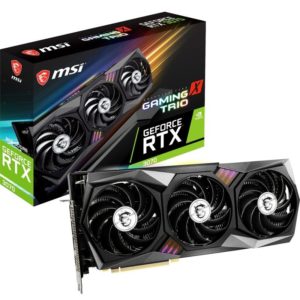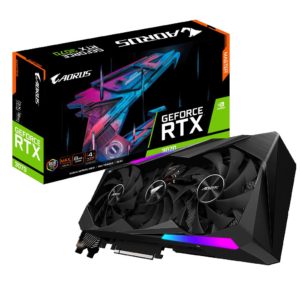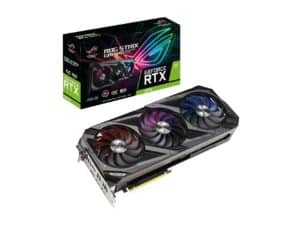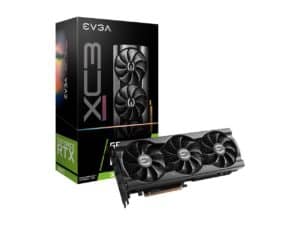Best RTX 3070 graphics cards for 2024 – our top picks
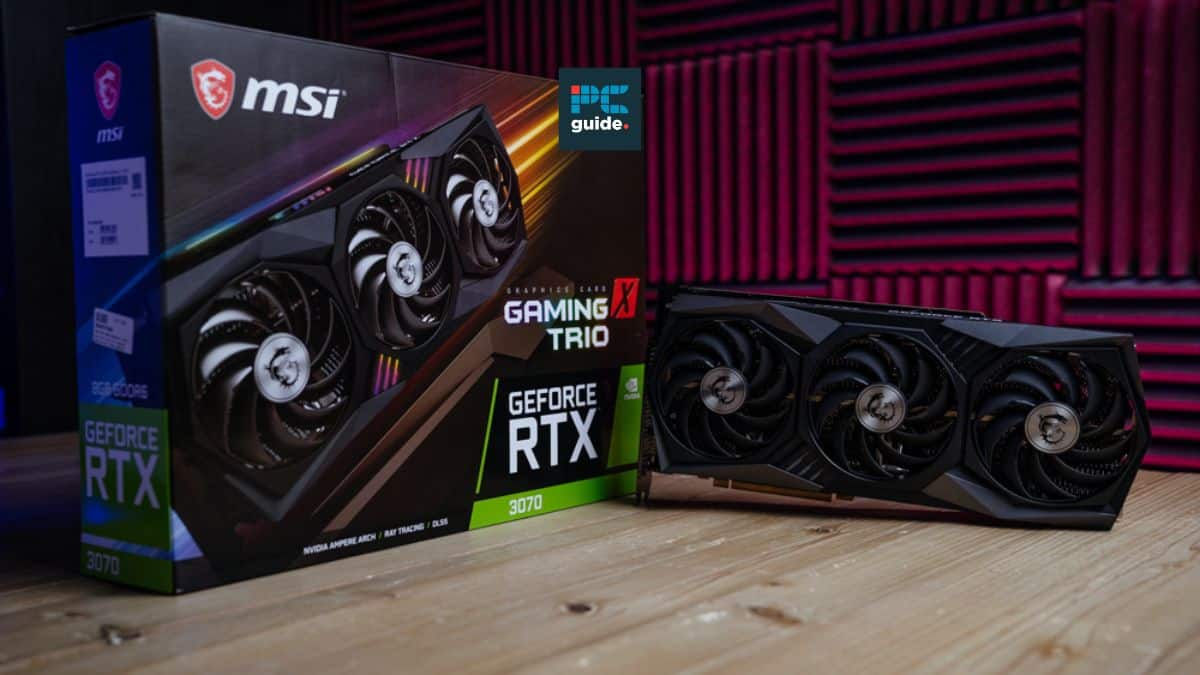
Table of Contents
The best RTX 3070 graphics cards are components to be invested in for those seeking a GPU to hit the 1440p sweet spot. The 3070 comes with the reliable Ampere tech that the whole series is built upon, creating a powerful GPU capable of running many AAA games at higher-end settings – assuming you have a system that can support it.
In our review of the RTX 3070, we saw that the card still offers good value, especially if you’re into 1080p and 1440p gaming. We’d recommend getting this GPU if you have a mid-range build, and it’s quite a steal if you get it at a discounted price.
In this article, we’re looking at the best 3070 models you can find, eliminating the need for you to go out and do your own research, and wasting the precious time you could spend making the most of the up-to-4k capabilities of this piece of kit.
Below, you’ll find four different RTX 3070 cards, all with advantages and disadvantages over each other – specifically looking at overclocking, cooling, and value for money. Let’s get started.
Products at a Glance
How we picked the best RTX 3070 cards
Our sister site WePC.com got hands-on with the card in their RTX 3070 review, and the overall conclusion was that “even to this day the RTX 3070 holds a strong value with its price to performance”. Despite being over three years old, and being succeeded by the RTX 40-series, the RTX 3070 still held its own in modern titles – it soared through Cyberpunk 2077 with an average of 62FPS at 1440p. It doesn’t benefit from frame generation or DLSS 3, but the fact that it’s $200 cheaper than the 40 cards while rivaling them in performance makes the 3070 a strong value choice for 1440p.
So, based on our knowledge of this card, for choosing the best GeForce RTX 3070 graphics cards available we cherry-picked the areas that made some of these GPUs superior to the rest.
These criteria include cooling, aesthetics, and value, as these elevate the already impressive performance to new levels while also looking good in the process. Furthermore, most if not all of the top-tier RTX 3070s are on an even playing field when it comes to clock speeds, etc. so having those little additions is the only real way of separating the best from the rest.
Product Reviews
- TRI FROZR 2 thermal system designed for efficient cooling
- RGB lighting that can synchronise with other compatible devices
- Excellent for gaming at 1080p
- On the heavier side, weighing 3.39 pounds
- A bit power hungry with a TDP of 240W meaning you will need a suitable PSU
- Might struggle reaching 4K, especially with ray tracing enabled
If you want aesthetics, cooling, and reliability, look no further than the MSI NVIDIA GeForce RTX 3070 8GB GAMING X TRIO. Yet again, similar to that of their RTX 3080 variant, it comes with all the bells and whistles we’ve become accustomed to such as the FROZR 2 cooling system and that RGB lighting gamers know and love.
Let’s first talk about that cooling and why it’s vital to the card’s performance. As stated previously, the MSI NVIDIA GeForce RTX 3070 8GB GAMING X TRIO uses the TRI FROZR 2 cooling system in addition to newly designed TORX FAN 4.0 blades, combining to create extremely efficient thermal dissipation, keeping your 3070 cool even under intense stress.
There’s also some tech called Airflow Control packed in which direct air to where it’s required for maximum cooling. Couple this with the wave-curved 2.0 fin edges and you’ll get a quieter overall GPU rather than the blustery noises of the past. All of this comes together to create a quiet yet extremely cool graphics card that’s a necessity due to the sheer power. If it weren’t to have this cooling, it would likely overheat and essentially turn into an expensive paperweight.
Looking more on that power, let’s delve a little into the actual specs. You’ll be taking advantage of the card’s core 1500MHz clock, boostable up to 1830MHz, giving you even more punch if you choose to overclock. There’s also 8GB of GDDR6 memory in conjunction with 5888 CUDA Cores allowing for your AAA games to run as smooth as possible even at 4k resolutions.
Finally, the aesthetics. It looks exactly like you’d expect from an MSI Gaming TRIO with the three fan configuration and those simple but effective RGB lighting placements that give the card a little flair. The black and grey colors give it a professional and stealth-like finish that will fit right into a number of PC builds, matching that of other components that’ll surely be in there.
- Incredible boost clock: faster than the standard spec at 1815MHz vs 1770MHz
- Efficient cooling with alternate spinning fans means no overheated system
- Customizable RGB light strip looks stylish in your rig
- A little costly with an MSRP of $749.99
- Occupies substantial space
- Might be overkill for entry-level gamers
Of course, a Gigabyte card has to make the list of the best RTX 3070 GPUs, and this time round we’ve chosen the Aorus Master 8G edition due to its array of features that other graphics cards simply don’t have.
Jumping straight into those features, some are aesthetic-based but it’s the cooling that we’ll focus on first. The Max-Covered cooling system utilizes three 100mm unique blade stack fans with wind claw design and alternate spinning. These bolster airflow and push the air pressure to completely cover the heatsink. Moreover, the fan fins are angular and unequal to channel airflow even further, enlarging the surface area coverage, attempting to keep the whole card cool rather than just some portions.
While the cooling is great, let’s look at the fancy RGB and special effects that you gamers out there crave. There are subtle top and bottom lighting strips that provide some luminance to the more blacked-out effect card but it’s the built-in LCD screen (yes LCD screen) on the side of the card that we’re most interested in. The LCD monitor not only enables you to see specific graphics card information, but you can also display various text, pictures, and GIFs to fully customize your internals. These can all be adjusted with the handy RGB FUSION 2.0 software making it super simple to switch it up when you get bored.
Finally, the specs. The GIGABYTE AORUS boasts a base clock of 1500MHz with a boost of up to 1815MHz which is actually a little more than the MSI variant we’ve listed above, proving why this RTX 3070 deserves its place on this list. Moreover, you’ll be getting the usual 5888 CUDA Cores and 8GB of GDDR6 memory propping up the already immense power.
- Axial-Tech fan upgrades mean your system stays cool even when pushed to its limits
- Its aesthetic looks great with other ASUS products
- Priced below $700 it offers a great price to performance ratio
- Struggles with DLSS and ray tracing when gaming in Ultra settings
- Heavy card weighing 4 pounds, so might need extra support from a GPU bracket
ASUS and its ROG Strix range of graphics cards are always up there with the top choices no matter what type you’re looking for. Their RTX 3070, however, takes it to another level building on the already great features of its predecessors and improving them further.
Again, let’s initially look at the cooling tech that’s gone into this card. The Axial-Tech fan upgrades see auxiliary fans now boasting 11 individual blades and the main central fan housing 13, creating a force to be reckoned with. Additionally, the barrier ring on the side of the fans has been slimmed down a little to increase lateral intake creates an optimized airflow. This also boosts static pressure to direct air directly onto the GPU heat spreader leading to a cooler card overall.
As well as improving the cooling efforts of the ROG Strix, the design has got a facelift too. There are new metal accents that mirror the design aesthetic of ROG and ROG Strix motherboards, bringing the whole family together and streamlining the aesthetics of your build if you’re an ASUS fan. The RGB lighting is utilized in a subtle fashion running along the top of the GPU and leaking into those fans making it not too garish and in your face.
To round off, probably the key part for most – the specs. As to be expected, you’re looking at that 1500MHz base clock speed but the overclocking capabilities max out at a 1725MHz boost which is a little less than the two previous options but that’s reflected in the price point. It does, however, still have the usual suspects of 8GB of GDDR6 RAM and 5888 CUDA Cores that we’re accustomed to at this point. All in all, a solid RTX 3070 that’s worth dropping your hard-earned cash on.
- Silent fan mode means gaming can continue uninterrupted
- Decent boost clock of 1770 MHz, solid and reliable specs and performance
- Good value for money, priced at $669 - actually the most affordable option in this list
- Older-gen GPUs might need to be replaced sooner than current-gen cards
- Might not be able to handle 4K gaming or the use of DLSS or ray tracing without low FPS
Last up, we can’t finish a best GPU list without mentioning an EVGA variant – a shame considering the company parted ways with Nvidia in 2022. The one we think is the top selection from their lineup is the EVGA NVIDIA GeForce RTX 3070 8GB XC3 ULTRA GAMING due to the history of its predecessors and the further improvements made this time.
The first of these improvements is the introduction of airflow pockets within the heatsink, allowing the air to move freer, especially when the card is being put in intensive situations. Additionally, new 180-degree heat pipes have been introduced in which have increased contract area, making heat dissipation more optimized. EVGA has also thought about your ears, developing new fan tech that allows silence. The 0DB mode which essentially does exactly what it says, aims to keep fan noises to an absolute minimum, removing any potential distractions in the heat of the moment.
Now, let’s talk aesthetics. It doesn’t look as slick as the 2080 or 2080Ti due to it’s size and the more blocky nature, but it does still offer a nicely designed body overall. RGB enthusiasts may also be left a little wanting with almost no fancy effects. The only lighting inclusion is on the EVGA logo itself. While some might see this as a downside, for those who are looking for a subtler setup with minimal lighting effects, the XC3 ULTRA GAMING might actually be a more beneficial pickup.
Looking at the specs, again, it’s all a bit of a muchness at this point with the standard 1500MHz base clock, 8GB GDDR6 RAM, and 5888 CUDA Cores. But, the boost clock is sitting in the middle of the road compared to the rest of the pack coming in at 1770MHz which is pretty solid and you’d certainly see the difference compared to the lesser ROG Strix max.
Things to consider
As mentioned earlier, the RTX 3070 is still a stellar card for 1440p gaming, but it’s important to note that it is an older card. The Ampere architecture is trustworthy and reliable, and has served gamers for many years, but the newer 40-series and the Ada Lovelace architecture might okay better on modern AAA titles. So, in order to make sure your new 3070 is reaching its fullest potential, there are a few extra things to consider: namely cooling and optimizing with choosing the best hardware.
Cooling
Due to the graphical output of an RTX 3070, you know it’s likely to get hot. So, when on the search for your preferred choice, look out for the cooling improvement manufacturers have made over previous iterations of their GPU family.
Companies like MSI and EVGA for example have quite clearly shown that the inclusions of new fan systems as well as heat dissipation tools were necessary and more importantly, work. But, this doesn’t always mean it’ll be icy cool so ensure you have a spacious case that provides excellent airflow to keep your 3070 GPU at optimal temperatures.
Optimizing your rig
Making your GPU sing by pairing it with components that are going to help enhance its performance is always a necessary consideration. However, it’s even more important for the RTX 3070 if you want to soar through top-end gaming at 1440p, or overclock your card for faster speeds. Luckily, we’ve done a lot of the hard work for you here by creating guides to help you choose the best CPU for the RTX 3070, as well as the best PSU for the 3070 to make sure your hardware is going to help, and not hinder, your new GPU.
Our Verdict
If you’re looking for a next-generation graphics card on a budget, any of the Nvidia RTX 3070 models above will certainly do the job. However, if you want the pinnacle of GeForce RTX 3070 GPUs, you have to go with the MSI NVIDIA GeForce RTX 3070 8GB GAMING X TRIO. Like it’s bigger RTX 3080 brother, it has great aesthetics and incredibly impressive cooling that MSI is certainly known for. Alternatively, if the MSI doesn’t do it for you, ASUS NVIDIA GeForce RTX 3070 8GB ROG Strix is a great second option and still has some top tier additions while coming in at an even more budget price.


